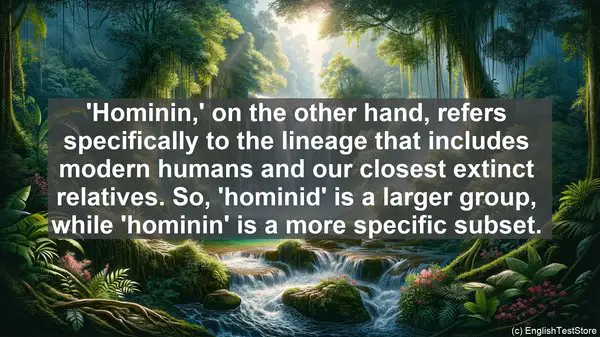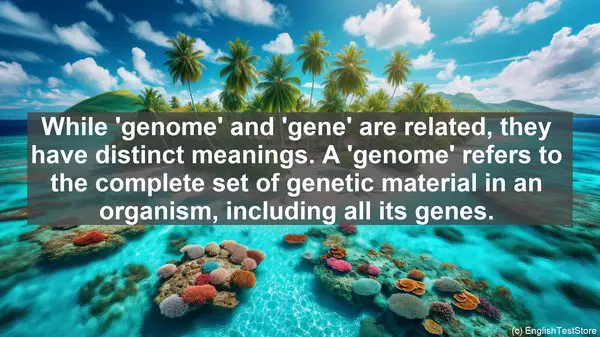Introduction
Welcome to today’s lesson on paleogenomics. As you delve into this field, you’ll encounter numerous terms that might seem similar but have distinct meanings. In this lesson, we’ll unravel the top 10 commonly confused words in paleogenomics. Let’s get started!
1. Ancient vs. Archaic
The words ‘ancient’ and ‘archaic’ are often used interchangeably, but they have subtle differences. ‘Ancient’ refers to something that existed a long time ago, while ‘archaic’ specifically denotes something outdated or no longer in use. In paleogenomics, we might refer to ‘ancient DNA’ to describe genetic material from past organisms, but ‘archaic DNA’ would refer to DNA from species that are no longer extant. Remember, ‘ancient’ is about time, while ‘archaic’ is about relevance.
2. Extinct vs. Endangered
When discussing species, ‘extinct’ and ‘endangered’ are two terms that can be confused. ‘Extinct’ means that a species no longer exists, while ‘endangered’ refers to a species that is at risk of becoming extinct. In paleogenomics, we might study ‘extinct species’ to understand their genetic makeup, while efforts are made to protect ‘endangered species’ from extinction. So, ‘extinct’ means gone forever, while ‘endangered’ means in danger of disappearing.
3. Fossil vs. Artifact
In the context of paleogenomics, ‘fossil’ and ‘artifact’ are often used when discussing ancient remains. A ‘fossil’ refers to the preserved remains of a once-living organism, while an ‘artifact’ is an object made or modified by humans. So, if we find a bone from a long-extinct species, it would be a ‘fossil,’ but if we discover a tool crafted by early humans, it would be an ‘artifact.’ ‘Fossil’ is about natural remains, while ‘artifact’ is about human-made objects.
4. Genome vs. Gene
While ‘genome’ and ‘gene’ are related, they have distinct meanings. A ‘genome’ refers to the complete set of genetic material in an organism, including all its genes. On the other hand, a ‘gene’ is a specific segment of DNA that carries the instructions for a particular trait. Think of the genome as a library, and genes as the individual books within it. So, ‘genome’ is the entire collection, while ‘gene’ is a specific section.

5. Evolution vs. Natural Selection
In the study of paleogenomics, ‘evolution’ and ‘natural selection’ are fundamental concepts. ‘Evolution’ refers to the overall change in a population’s genetic makeup over time, encompassing various processes. ‘Natural selection’ is a specific mechanism within evolution, where certain traits become more or less common based on their fitness in a given environment. So, ‘evolution’ is the broader concept, while ‘natural selection’ is a specific process within it.
6. Mutation vs. Variation
Both ‘mutation’ and ‘variation’ involve changes in genetic material, but they differ in scope. A ‘mutation’ is a specific change in a DNA sequence, which can occur spontaneously or due to external factors. ‘Variation,’ on the other hand, refers to the range of different traits within a population, which can be the result of mutations. So, ‘mutation’ is about individual changes, while ‘variation’ is about the diversity within a group.
7. Cloning vs. Reproduction
When it comes to creating genetically identical organisms, ‘cloning’ and ‘reproduction’ are often mentioned. ‘Cloning’ involves creating an exact genetic copy of an organism, while ‘reproduction’ refers to the natural process of creating offspring. In paleogenomics, we might discuss ‘cloning extinct species’ as a theoretical possibility, but ‘reproduction’ is the natural way species propagate. So, ‘cloning’ is about replication, while ‘reproduction’ is about continuation.
8. Homologous vs. Analogous
When comparing traits between species, ‘homologous’ and ‘analogous’ are used to describe their similarities. ‘Homologous’ traits are those that are inherited from a common ancestor, even if they might have different functions in different species. ‘Analogous’ traits, on the other hand, have similar functions but do not share a common ancestry. So, ‘homologous’ is about shared ancestry, while ‘analogous’ is about similar functions.

9. Phylogeny vs. Ontogeny
In the study of paleogenomics, ‘phylogeny’ and ‘ontogeny’ are important concepts. ‘Phylogeny’ refers to the evolutionary history and relationships between different species, often depicted in a ‘tree of life.’ ‘Ontogeny,’ on the other hand, focuses on the development of an individual organism from fertilization to adulthood. So, ‘phylogeny’ is about species relationships, while ‘ontogeny’ is about individual development.
10. Hominid vs. Hominin
The terms ‘hominid’ and ‘hominin’ are frequently used when discussing human ancestors. ‘Hominid’ is a broader term that includes both modern humans and their extinct relatives, like Neanderthals. ‘Hominin,’ on the other hand, refers specifically to the lineage that includes modern humans and our closest extinct relatives. So, ‘hominid’ is a larger group, while ‘hominin’ is a more specific subset.
